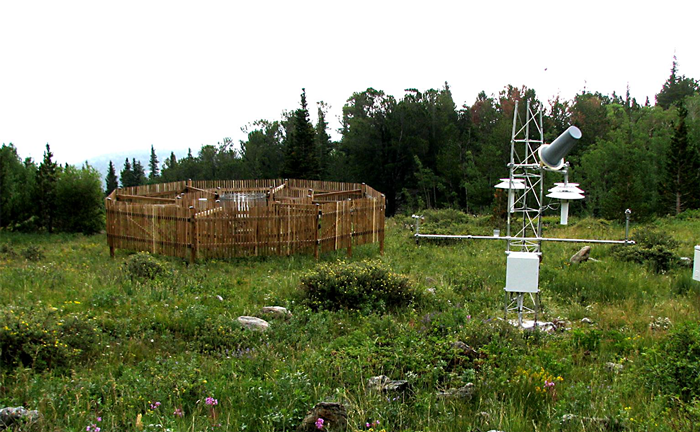




1990 年代後半、世界の気候条件の変化に対する懸念が高まる中、米国にはデータ収集を行う何千もの気象観測所がありました。しかし、観測所の多くは設置場所や管理が一貫しておらず、老朽化しており、信頼性を失う危険があることが判明しました。これらの観測所の中で最も優れたものは、Historical Climate Network と呼ばれ、1930 年代までさかのぼって優れたデータを収集していました。
気候変動の潜在的影響を評価する人々に信頼できる情報を提供するには、気温測定ステーションのネットワークを改善する必要がありました。膨大な量の過去の気候観測データを検証する必要があり、将来にわたって継続的かつ均一な気象測定を提供するプログラムが必要でした。
国の既存の観測能力を安定させ、長期にわたって気候観測プログラムを開発、実施、運用する任務は、米国海洋大気庁 (NOAA) とその大気乱流拡散部門 (ATDD) に与えられました。任務には、50 年以上にわたって一貫した測定が期待できる高品質の気象観測所の新しいネットワークを構築することが含まれていました。また、同局は、既存の歴史的気候ネットワークのデータと新しい観測所のデータを比較して、歴史的データが信頼できることを確認する必要がありました。目標は、気候変動を検出するために、1930 年代から 21 世紀まで信頼できる継続的なデータ ストリームを提供することでした。
NOAA は、米国気候基準ネットワーク (USCRN) を米国最高の気候監視ネットワークにすることを目指して設立しました。最初の 2 つの実験ステーションは 2001 年に設置されました。ネットワークが今後数十年にわたって高品質のデータを収集できるように、ATDD は多くのコンポーネントをテストし、遠隔地での長期にわたる高品質の測定に最適な機器を決定しました。ネットワーク内の 114 を超えるステーションのコアとして、Campbell Scientific の CR3000 マイクロロガーを選択しました。通信は Campbell の SAT HDR GOES トランスミッターを介して行われ、データロガーの電源と筐体も Campbell Scientific 製です。
USCRN の 2 つの主要変数である気温と降水量は、どちらも 3 つのセンサー構成で測定されます。各ステーションには、吸引式の 1000 オーム RTD 温度プローブ 3 個と、センサー 3 個を備えた雨雪計が備えられています。これらの計器は、降水捕捉効率を最大化するために、小型の二重フェンス相互比較基準フェンス内に設置されています。二次変数には、風、太陽放射、赤外線、土壌水分、土壌温度、相対湿度、積雪深などがあります。
USCRN ステーションは、建物や道路の影響を受けないように、少なくとも 50 年間は開発されないと予想される自然のままの場所に設置されます。つまり、メンテナンスや修理のためにアクセスしにくい場所にあるため、Campbell ギアの実証済みの堅牢性と信頼性は、この用途に最適です。
ケーススタディの概要
アプリケーション
高信頼性気象観測所ネットワーク場所
アメリカ合衆国使用製品
CR3000 NL115 TX320参加団体
アメリカ海洋大気庁(NOAA)、大気乱流拡散部(ATDD)計測項目
降水量、気温、日射量、風速、土壌水分関連ウェブサイト
NOAA USCRN websitePDFで見る